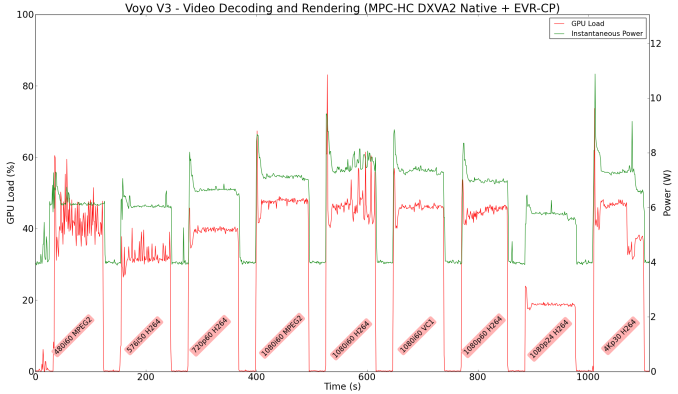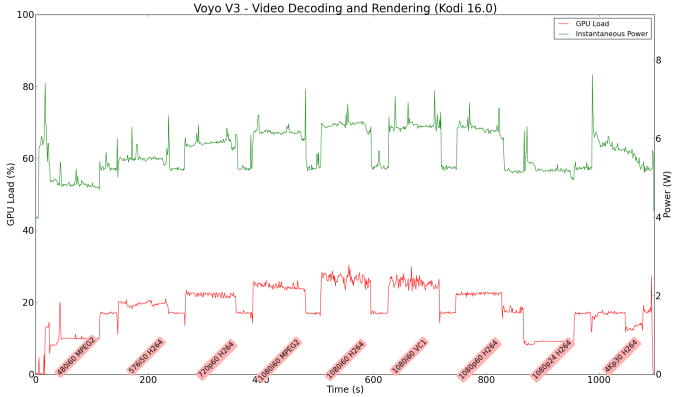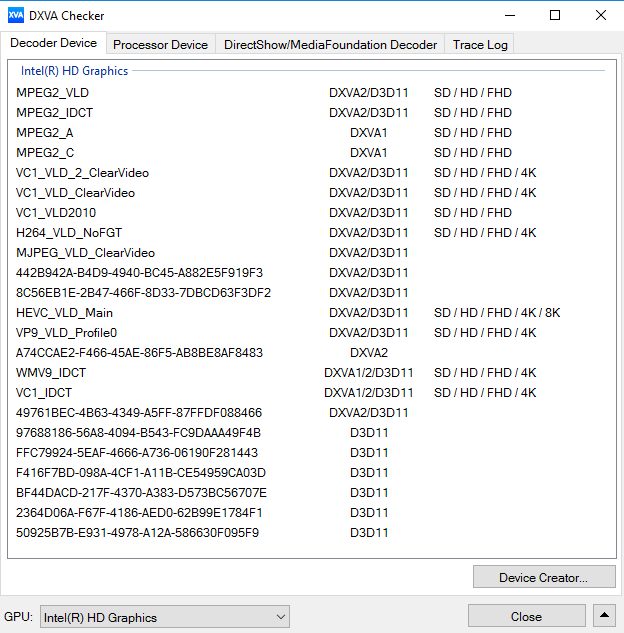Voyo V3 Review - A Fanless Intel Atom x7-Z8700 (Cherry Trail) mini-PC
by Ganesh T S on March 1, 2016 8:00 AM EST- Posted in
- Systems
- Intel
- Atom
- Passive Cooling
- Mini-PC
- Cherry Trail
HTPC Credentials
Given the Voyo V3's fanless nature and the presence of Intel HD Graphics, we expect many purchasers to use it as a media playback machine / HTPC. In fact, GearBest markets the Voyo V3 as a media player / mini-PC. It is obvious that we are not looking at a madVR capable machine, but one targeted at the entry-level / average HTPC user or someone looking for a HTPC to put in a second or third room (non-primary HTPC). There are two HTPC aspects that we will explore in this section, one related to network streaming (OTT services), and the other related to local file playback. Prior to that, we have a small sub-section dealing with refresh rate accuracy.
Refresh Rate Accurancy
Starting with Haswell, Intel, AMD and NVIDIA have been on par with respect to display refresh rate accuracy. The most important refresh rate for videophiles is obviously 23.976 Hz (the 23 Hz setting). Bay Trail didn't have problems with this refresh rate, and, as expected, the Cherry Trail-based Voyo V3 has no trouble with refreshing the display appropriately in this setting.
The gallery below presents some of the other refresh rates that we tested out. The first statistic in madVR's OSD indicates the display refresh rate.
Network Streaming Efficiency
Evaluation of OTT playback efficiency was done by playing back our standard YouTube test stream and five minutes from our standard Netflix test title. Using HTML5, the YouTube stream plays back a 1080p H.264 encoding. Since YouTube now defaults to HTML5 for video playback, we have stopped evaluating Adobe Flash acceleration. Note that only NVIDIA exposes GPU and VPU loads separately. Both Intel and AMD bundle the decoder load along with the GPU load. The following two graphs show the power consumption at the wall for playback of the HTML5 stream in Mozilla Firefox (v 44.0.1).

GPU load was around 45.32% for the YouTube HTML5 stream and 5.87% for the steady state 6 Mbps Netflix streaming case.
Netflix streaming evaluation was done using the Windows 10 Netflix app. Manual stream selection is available (Ctrl-Alt-Shift-S) and debug information / statistics can also be viewed (Ctrl-Alt-Shift-D). Statistics collected for the YouTube streaming experiment were also collected here.

Decoding and Rendering Benchmarks
In order to evaluate local file playback, we concentrate on EVR-CP with MPC-HC and Kodi 16.0. We already know that EVR works quite well even with the Intel IGP for our test streams. In our earlier reviews, we focused on presenting the GPU loading and power consumption at the wall in a table (with problematic streams in bold). Starting with the Broadwell NUC review, we decided to represent the GPU load and power consumption in a graph with dual Y-axes. Nine different test streams of 90 seconds each were played back with a gap of 30 seconds between each of them. The characteristics of each stream are annotated at the bottom of the graph. Note that the GPU usage is graphed in red and needs to be considered against the left axis, while the at-wall power consumption is graphed in green and needs to be considered against the right axis.
Frame drops are evident whenever the GPU load consistently stays above the 85 - 90% mark. The Broadwell-class GPU has no problems at all with any of our test streams (up to 4Kp30 H.264)
Power consumption at the wall was less than 8W even for the most stressful high frame-rate streams. GPU loading was also reasonable (as measured using GPU-Z)
Moving on to the codec support, the Gen8 LP 16 EU-version in the Atom x7-Z8700 is quite similar to that of the Atom x5-Z8300 in the Intel Compute Stick, DXVA Checker serves as a confirmation. The GPU includes decode support for HEVC Main Profile (8b) up to 8K resolution. Unfortunately, without the capability to drive a 4Kp60 display over HDMI, this is not suitable as a 4K HTPC (even though it can drive up to 4Kp30, thanks to the HDMI 1.4b port)




















69 Comments
View All Comments
blepowerranger - Friday, March 4, 2016 - link
If Intel wants my money, they better make damn sure it works out of the box with Linux.So it is Intel's problem you see?
kyuu - Saturday, March 5, 2016 - link
Sure, but considering the small size of the die-hard Linux community, it almost certainly doesn't make sense to expend the resources supporting Linux for such a small revenue stream, when they can devote the resources to other areas with much more profitability.blepowerranger - Tuesday, March 8, 2016 - link
Hello 1995, welcome to 2016! A world where most phones, TV's, servers and all sorts of other stuff runs Linux. In a world where the die-hard Windows community is shrinking, it's ill advised to miss "the next big thing".Arnulf - Wednesday, March 2, 2016 - link
I wonder if Cherry Trail can run Windows 7. Can anyone elaborate on that?BrokenCrayons - Wednesday, March 2, 2016 - link
Intel doesn't supply Windows 7 drivers for Cherry Trail. The why behind that fact...I'm not sure. Maybe someone else can speak to that.Namisecond - Monday, March 7, 2016 - link
Try the windows 8 drivers (Assuming there are windows 8 drivers), sometimes it works well enough with windows 7.SeanJ76 - Wednesday, March 2, 2016 - link
Rip off of a NUC.....derpSeanJ76 - Wednesday, March 2, 2016 - link
That doesnt even run Windows Server.....what a joke!NUC's cost 350$ bare boned. Add a 240GB M2 SSD and a couple sticks of memory and your set.
speculatrix - Sunday, March 6, 2016 - link
Totally agree. I have a Toshiba Click Mini, a z3735f Baytrail convertible tablet which works well with Windows 8.1 and more recently Windows 10.I've got to the point where Linux is useable, with the keyboard dock and it's usb and SDHC slot working, but neither camera works, nor sound, nor Bluetooth. Rarely but annoyingly it locks solid, which i think is the video.
nathanddrews - Tuesday, March 1, 2016 - link
Theoretically, the Type-C port could be used as a 4K60 transport if the display or adapter were available?